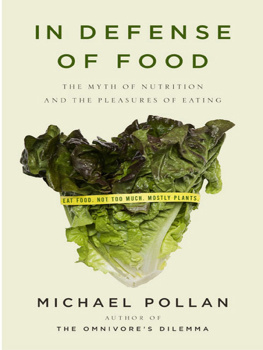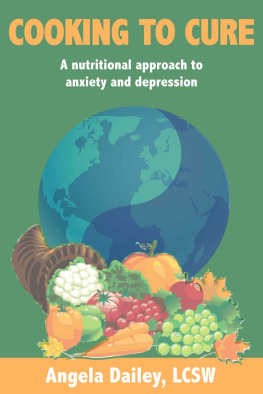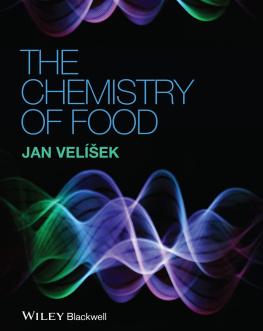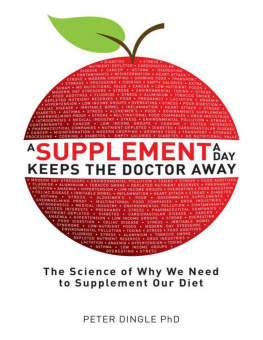NUTRITIONISM
ARTS AND TRADITIONS OF THE TABLE
Perspectives on Culinary History
ARTS AND TRADITIONS OF THE TABLE
Perspectives on Culinary History
Albert Sonnenfeld, Series Editor
Salt: Grain of Life, Pierre Laszlo, translated by Mary Beth Mader
Culture of the Fork, Giovanni Rebora, translated by Albert Sonnenfeld
French Gastronomy: The History and Geography of a Passion, Jean-Robert Pitte, translated by Jody Gladding
Pasta: The Story of a Universal Food, Silvano Serventi and Franoise Sabban, translated by Antony Shugar
Slow Food: The Case for Taste, Carlo Petrini, translated by William McCuaig
Italian Cuisine: A Cultural History, Alberto Capatti and Massimo Montanari, translated by ine OHealy
British Food: An Extraordinary Thousand Years of History, Colin Spencer
A Revolution in Eating: How the Quest for Food Shaped America, James E. McWilliams
Sacred Cow, Mad Cow: A History of Food Fears, Madeleine Ferrires, translated by Jody Gladding
Molecular Gastronomy: Exploring the Science of Flavor, Herv This, translated by M. B. DeBevoise
Food Is Culture, Massimo Montanari, translated by Albert Sonnenfeld
Kitchen Mysteries: Revealing the Science of Cooking, Herv This, translated by Jody Gladding
Hog and Hominy: Soul Food from Africa to America, Frederick Douglass Opie
Gastropolis: Food and New York City, edited by Annie Hauck-Lawson and Jonathan Deutsch
Building a Meal: From Molecular Gastronomy to Culinary Constructivism, Herv This, translated by M. B. DeBevoise
Eating History: Thirty Turning Points in the Making of American Cuisine, Andrew F. Smith
The Science of the Oven, Herv This, translated by Jody Gladding
Pomodoro! A History of the Tomato in Italy, David Gentilcore
Cheese, Pears, and History in a Proverb, Massimo Montanari, translated by Beth Archer Brombert
Food and Faith in Christian Culture, edited by Ken Albala and Trudy Eden
The Kitchen as Laboratory: Reflections on the Science of Food and Cooking, edited by Csar Vega, Job Ubbink, and Erik van der Linden
The Secret Financial Life of Food: From Commodities Markets to Supermarkets, Kara Newman
Creamy and Crunchy: An Informal History of Peanut Butter, the All-American Food, Jon Krampner
Let the Meatballs Rest: And Other Stories about Food and Culture, Massimo Montanari, translated by Beth Brombert
Drinking History: Fifteen Turning Points in the Making of American Beverages, Andrew Smith
NUTRITIONISM
THE SCIENCE AND POLITICS OF DIETARY ADVICE
Gyorgy Scrinis
COLUMBIA UNIVERSITY PRESS NEW YORK
COLUMBIA UNIVERSITY PRESS
Publishers Since 1893
NEW YORK CHICHESTER, WEST SUSSEX
cup.columbia.edu
Copyright 2013 Columbia University Press
All rights reserved
E-ISBN 978-0-231-52714-9
Library of Congress Cataloging-in-Publication Data
Scrinis, Gyorgy.
Nutritionism : the science and politics of dietary advice / Gyorgy Scrinis.
pages cm (Arts and traditions of the table : perspectives on culinary history)
Includes bibliographical references and index.
ISBN 978-0-231-15656-1 (cloth : alk. paper) ISBN 978-0-231-15657-8 (pbk. : alk. paper) ISBN 978-0-231-52714-9 (e-book)
1. NutritionPublic opinion. 2. FoodComposition. 3. Functional foods. 4. Public healthPolitical aspects. I. Title.
RA784.S435 2013
A Columbia University Press E-book.
CUP would be pleased to hear about your reading experience with this e-book at .
Cover design: Mary Ann Smith
Cover images: Food pyramid by Brian Hagiwara/Getty Images
Laboratory bottle by Buena Vista Images/Getty Images
References to websites (URLs) were accurate at the time of writing.
Neither the author nor Columbia University Press is responsible for URLs that may have expired or changed since the manuscript was prepared.
CONTENTS
AHA | American Heart Association |
ALA | alpha-linolenic acid |
AMA | American Medical Association |
AND | Association for Nutrition and Dietetics (formerly the American Dietetic Association) |
BMI | body mass index |
CSPI | Center for Science in the Public Interest |
DASH | Dietary Approaches to Stop Hypertension |
DHA | docosahexaenoic acid |
DHHS | U.S. Department of Health and Human Services |
EPA | eicosapentaenoic acid |
FDA | U.S. Food and Drug Administration |
GI | glycemic index |
GL | glycemic load |
HDL | high-density lipoprotein |
LDL | low-density lipoprotein |
NAS | National Academy of Science |
RDA | Recommended Dietary Allowance |
USDA | U.S. Department of Agriculture |
In appearance, colour, luster, and plasticity, margarine is superior to butter; in taste and flavor the recent improvements show excellent results. The nutritional qualities of margarine, too, can be modified with comparative ease, either by action on the constituents of the fat phase, or by the inclusion of useful additives.
ROBERT FERON, MARGARINE, 1969
Margarine has been the chameleon of manufactured food products, able to transform its nutritional appearance, adapt to changing nutritional fads, and charm unwitting nutrition experts and nutrition-conscious consumers. While research published by nutrition scientists in the early 1990s on the harmfulness of the trans-fats in margarine temporarily unveiled its highly processed and degraded character, margarine has subsequently been reinvented as a trans-fat-free, cholesterol-lowering functional food.
The history of margarine reflects some of the broader shifts in nutritional paradigms across three distinct eras of nutrition science and dietary advice over the past century and a half. From its invention by a French chemist in the late nineteenth century and up until the 1960s, the public generally regarded margarine as a cheap imitation of butter, and margarine was largely consumed by those who could not afford the real thing. The manufacturing of this highly processed spread involved hardening the vegetable oil by chemically reconstituting the polyunsaturated fats in the oil, a process that produces both saturated fats and novel forms of trans-fatty acids. A number of other ingredients were added to help simulate the appearance, taste, texture, and nutrient profile of butter, including yellow coloring agents and vitamins A and D.
It was entirely on the basis of the emerging hypothesis regarding good and bad fats that many nutrition scientists came to promote those margarines manufactured from polyunsaturated-rich vegetable oils as healthier than saturated fatrich butter. These experts considered the beneficial effects of polyunsaturated oils, and the detrimental effects of saturated fats, to be more important than the types of processing and additives used in the manufacture of margarine.











